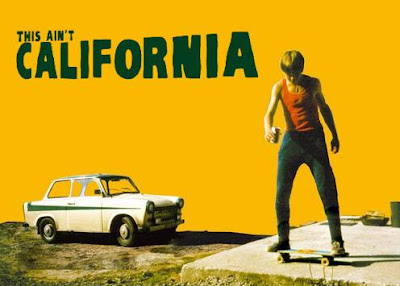Public space in the GDR was - as in manyother autocratic societies - understood as a means of political representationof the regime. The occupation of East Berlin by the USSR and the foundation ofthe GDR also entailed a radical change in the configuration and understandingof urban public spaces. One of the foundational principles of the GDR wasovercoming of previous epochs, which also influenced urban planning and thebuilt environment. As a first measure, the demolition of buildings that had beenclosely associated with Prussia should make space for the new regime. Therefore buildings like the Berlinpalace (Stadtschloss) and Schinkel’s Bauakademie needed to give way forpublic spaces as sites of organised mass events. East Berlin got rebuild as the’centre of a representative publics’, a space of self-staging. Moreover thebuilt environment should represent the collective thinking of the socialiststate through grand gestures of buildings beyond human scale provokinghumbleness in its citizens. The individual was subordinate and rendered smallunder the overwhelming influence of the state. With grand axes and vast openspaces, East Berlin’s new city centre should appear as one continuous space. Alexanderplatz, the space around the impressivenew TV Tower was designed as one continuous concrete surface that should laterbecome a heaven for skateboarders.
The German documentary ‘This Ain’t California’ by MartenPersiel, which premiered a few days ago at the BerlinaleFilm Festival is an impressive document of skateboard culture in the GDR andalso got me thinking about public space in GDR Berlin. The director brought togethera former GDR 1980s skateboard gang, whose members vividly reminisce about howthey built their first Rollbrett andlater smuggled skateboards from the West to the East and how the skateboardingscene grew in the GDR. The terrific film sets the subculture of skateboardingin the context of the political landscape of that time. At a time when the Eastern bloc alreadystarted to crumble, a vivid skater culture, partly autonomous partly withWestern influence developed. The concrete desert of East Berlin’sAlexanderplatz was on the one hand the most obvious stage for the skaters onthe other hand also a site of subverting the authoritative socialiststate. The public space no longerwas a means of representation or intimidation, through skateboarding it got aplace for self expression and if not intentionally also for resistance. 
In the GDR, sport was highly reputable andpromoted. Especially top-athletes, and the GDR had many of them, were highlyrespected as representatives of their state. But skateboarding was not such asport, since it was seen as a pop-cultural capitalist threat invading from theWest. Therefore, as the documentary depicts, the skateboarders where surveyedby the Stasi as potential dissident citizens. Simultaneously authorities triedto control the teenagers through the installation of institutionalisedfacilities to train and coach this new sport to make the GDR also competitivein international skateboarding events. Obviously these institutions were neverreally successful amongst the skateboarders, as also in the GDR the sport wasmore understood as a way of life rather than a sporting discipline.
Arguably, the act of skateboardingquestioned the state of public spaces of the socialist regime. Skateboarding,or in GDR terminology Rollbrettfahren,was a form of embodied resistance and rendered the space as a representationalspace. As the documentary clearly elucidates, not only in the West but also inthe East skateboarding was built on an anarchist tradition of hacking the urbanlandscape. Iain Borden (authorof Skatebordingspace and the city: architecture and the body) argues in a Lefebvrian sensethat ‘skateboarders see the city as a place to assert use values over exchangevalues, pleasure over toil, active bodies over passive behaviours’. In otherwords, skateboarders communicate a Marxist approach that public space is foruses rather than exchange. In this sense, in a way, skateboarding would havebeen a spatial practice that was in conformity with socialist ideologies. Butin former Eastern Germany there was no such thing as a capitalist abstractspace the skateboarders could challenge with their activity, as public spacewas never a space of consumption. Nevertheless skateboarding as depicted in‘This Ain’t California’ was an implicit critique of what public space shouldbe, a critique that was true for both the East and the West.  |
| Skateboarding in East Berlin, Thrasher Magazine, December 1988 |
Apart from raising questions about publicspace the documentary is a highly recommendable and entertaining film thatcomments on GDR politics, youth culture and everyday life through an impressiveamount of original footage. Of course, the film also resonates with a certainnostalgia for old school skateboarding and in general for GDR aesthetics, so called Ostalgie.
















